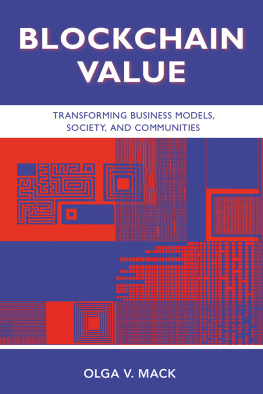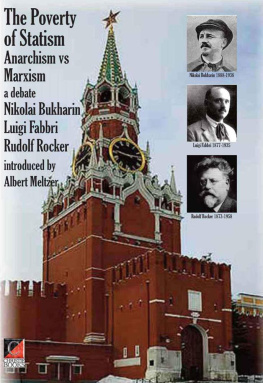Copyright @ 2021 Dr Olga M. Lazin
ISBN: 978-1-63848-986-3 (Paperback)
ISBN: 978-1-63848-988-7 (Hardcover)
ISBN: 978-1-63848-606-0 (Ebook)
This Book Is About:
From Pre-Colonial Times to 2021 in an On-Going World Context: Statism, Anti- Statism, Active State, and State Capitalism.In Mexico & Romania
With a 2020 Postscript
HOW President Vicente Fox Made Genaro Garca Luna (GGL) Chief of Mexicos FBI (2001-2006); and HOW President Felipe Caldern Made GGL Mexicos Secretary of National Security (2006-2012); HOW GGL (2016-2020) established GLAC as Master Mexican Private-Eye Company (Tacitly approved by Presidents Pea Nieto, during (2016-2218 and AMLO 2019-2020), with former FBI and CIA Agents on His of Board Directors.
While Living in Miami as a U.S. Resident), GGL was Arrested in 2020 and being tried in a U.S. Federal Court In New York for Having Taken Many Millions of Dollars in Bribes from El Chapo and His Sinaloa Cartel to arrange Smuggling Billions of Dollars of Drugs.
Book Interior and E-book Design by Amit Dey |
All Four Presidents said: Really Surprised.
How Mexico Compares to Romania, in Europe.
Follow the author: Twitter: @olgamlazin
Instagram: #drolgalazin, on FB:drolgalazin
DEDICATION to Magdalena Lazin, Eugen, Claudia & Elisabeta Lazin, Marin Popan, Valeria Bilt, James W., Roxane Bocskayi VP Kamala Harris, and Joe Biden, the United States President for standing for, and with the Truth during the unbearable Covid-19 pandemic.
Map 1
Mexico on the World Globe
M exico is physically about the size of todays American West that was taken from it in the Mexican-American War of 1845-1848in the Booklet of Charts assigned for this Course.
By total area (858,000 sq. miles), Mexico is the 14th largest nation in the world, excluding the European Union (which is made up of 27 indepen- dent countries, and excluding uninhabited dependent territories.)
With a population of about 128,932,753 million and increasing, Mexico is the 10th most populous country according to UN data.
Mexico is a federation comprising thirty-one states and a Federal
District, Mexico City, the countrys capital, which has become in effect the 32nd state.
By contrast, Romanias population in Eastern Europe is estimated at 19,237,691, and decreasing Romnia ranks number 61 in the list of countries by population.
Since 1994 Mexico has been the Latin American member of the Orga- nization for Economic Co-operation and Development (OECD). How- ever, in January 2010 Chile will become the second Latin American member, provided that its (or when) its investment and tax policies meet OECD standards. The OECD is based in Paris and its 30 members must meet first-world standards to be invited and eligible to join.
Why Mexico and Romania? Because the two states had been experimenting with statism, and state corporatism, which is a entrenched political culture closely related to fascism, during the Nazi occupation in Europe. The adherents to this type of societal organization hold that the corporate group which cements the nation together is the state. They then coalesce into economic interest groups, to join an officially detached interest group, which participate in policymaking. Consequently, the state has a great reach, and controls all the public corporate groups, and groups have great control over their members.
STATISM DEFINED
I need to first of all acknowledge my scientifically charged years at the University of Babes-Bolyai in Cluj, Romania during the post- coup dtat in December 1989. I graduated in 1992, in July, in Philology, and I had my fair share of statist education, something most capitalists in the USA would be envy.
I lived for 30 years, and been raised in a statist country, surrounded by more statist, and socialist countries, and I know how planned economies are run, and are nothing but milk cows for failed leaders, corrupt businessmen, and laboring masses, who sustain this type of clans.
Romania has politically experimented for 40 years with corporatism - closely related to fascism - under Nicolae Ceausescu, the dictators rein since 1953 to 1989, when a coup detat took place.
I have been living for 32 years in the United States, and travelled very often to Mexico, every month for the past 32 years. I know Mex- ico better than my country of origin, due to the knowledge of the Napoleonic Code, that is the justice model, based on Roman
Law. I have written about the HABEAS CORPUS in the USA, and the Mexican AMPARO, and how they compare. You can find this study on scribd.com.
In Mexico, which I studied deeply, and have done 30 years of research at UCLA in the History department, where I earned my doctoral degree, I have recognized, and seen the ironies and complexities of Romanian statism, and this is how this book was born. I hereby thank my mentors, Professor James W Wilkie, and Carlos Alberto Torres, with whom I did the angling on these complex issues, and helped me put this pieces of puzzle together.
Statism occurs anywhere when the State Central Government con- trols a big part, usually over 50% and in some cases all of the national economy. Under the guise of statism, interest groups, are yielding corporate power over major industries that are of strategical importance, analogue to and similar to fascism, and its grip on economic power during the 3rd Reich.
Destatification is the opposite of this process, and strong leadership can undo the state corporativist system, with the elimination of interest groups and their grip on the nationalistic economy, present at different times both in Mexico, and Romania.
These are the cycles and trends that we are focusing on in these 22 Chapters. Both Mexican and Romanian leaders have experimented with statism for decades, much to their advantage, and the detriment of their nations.
Leaders who follow statist policies claim to operate in the name of the people. Theoretically individuals are more important than the State, but the reverse is true.
Statism is accompanied by full or major control of politics and society (not easily quantified), resulting in predatory dictatorship making decisions through partial or full Central Planning. Civil Sector Police, military, legislators, and judicial officials follow orders.
The masses are expected to take orders from their supreme leader and his regional and local bosses, doing so without argument. In Mexico the local bosses are called caciques. Government may be based on State Capitalism, as in todays China and Russia.
Aspects of Statism include control of tariffs to protect the national economy, permissions to favorite persons or labor unions (syndicates) to monopolize companies that produce energy (oil, electricity), newspapers, television, and telephone systems, while watching for suspicious persons.
Statism allows for uncontrollable surveillance of its citizens (like the NSA in the USA does.) In Mexico governmental surveillance tools are being abused and misused for personal gain.
Statist systems tend to develop One-Party Democracies or Official Parties to justify (often through fraudulent elections and/or the purchasing of votes) for the purpose of remaining in permanent control of the Government.
Even nowadays, in 2021, Manuel Lopez-Obrador, operates on the statist model of development, which is a myth and a failure demonstrated by the history of Mexico. Airport contracts are being awarded to the military officers high up in the ranks, without any regards to safety, and equity.













